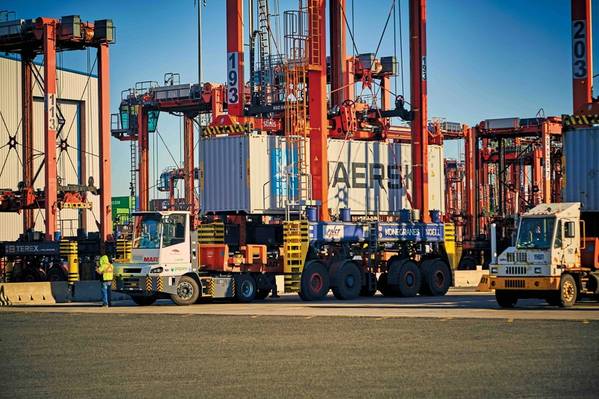
As U.S. ports face their annual surge in pre-holiday inventory arrivals, many are relying on propane-powered equipment to stay efficient, resilient, and cost effective. This surge in port activity comes just as the U.S. Department of Transportation (DOT) Maritime Administration announces $500 million in funding opportunities to upgrade port infrastructure across the country.
Propane forklifts and terminal tractors help ports keep fuel and maintenance costs low compared to diesel. They also maintain the highest standards of reliability and resiliency thanks to propane’s independence from the electric grid, ensuring operational uptime.
The U.S. DOT Maritime Administration and the Department of Energy announced $500 million in available funding to modernize port infrastructure through the FY 2025 Port Infrastructure Development Program (PIDP). The program offers between $1 million and $150 million per awarded project for eligible upgrades, including modernizing cargo-handling equipment, expanding LPG and LNG bunkering capabilities, and building microgrids and backup power systems—all of which align with propane’s proven role in supporting efficient, resilient, and low-emissions port operations.
“Ports across the country have shifted into high gear as holiday season inventory has started arriving on U.S. shores,” said Jim Bunsey, senior manager of material handling business development at the Propane Education & Research Council (PERC). “With tariffs and volatile diesel prices adding strain this season, having modern infrastructure is more critical than ever. This federal funding is a timely opportunity for port operators to upgrade to propane-powered solutions that can boost reliability, reduce emissions, and cut operational costs.”
Compared to diesel and gasoline, propane offers a cleaner, more cost-effective solution for port operations. On a per gallon basis, the cost of propane is up to 50 percent less than the cost of diesel or gasoline. Furthermore, because new propane-powered port tractor engines boast 99 percent lower NOx emissions than diesel tractors, they experience less engine wear and require less maintenance costs and downtime for replacing aftermarket filters and fluids.
In addition to powering essential material handling equipment, propane offers various operational advantages. Unlike electric equipment, propane-powered forklifts can run continuously without lengthy charging times, and they maintain consistent performance even during peak usage. Propane is also widely available and not affected by electric grid instability or charging infrastructure limitations—an important consideration as summer heatwaves and severe weather strain power systems.

